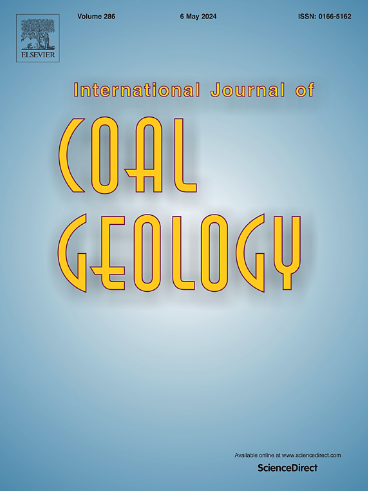准噶尔煤田二叠系—石炭系含煤层序中Al-Li-Ga-Nb(Ta)-Zr(Hf)的富集
IF 5.7
2区 工程技术
Q2 ENERGY & FUELS
引用次数: 0
摘要
煤载关键金属矿床已成为传统关键金属资源的可行替代方案,近年来引起了广泛关注。在中国北部鄂尔多斯盆地准噶尔煤田和其他煤田的几个二叠石炭系煤系中,发现了重要金属组合的显著富集,包括铝、镓、锂、稀土元素和钇(REY)。利用x射线衍射分析(XRD)、扫描电子显微镜(SEM-EDX)、TIMA-X综合矿物分析仪、x射线荧光光谱(XRF)、电感耦合等离子体质谱(ICP-MS)和LA-ICP-MS等分析技术,系统研究了3个具有经济意义煤层(3号、6号上、2号上)的矿物学和地球化学特征。准噶尔煤田北部老三沟探区(6煤)。重点研究了矿床内关键金属组合的赋存方式、富集机制和经济潜力。本文章由计算机程序翻译,如有差异,请以英文原文为准。
Enrichment of Al-Li-Ga-Nb(Ta)-Zr(Hf) in the Permo-Carboniferous coal-bearing sequences of the Jungar Coalfield, northern China
Coal-hosted critical metal deposits have emerged as a viable alternative to conventional critical metal resources and have garnered significant attention in recent years. Notable enrichments of critical metal assemblages, including aluminum, gallium, lithium, and rare earth elements and yttrium (REY) have been identified in several Permo-Carboniferous coal measures within the Jungar Coalfield and across other coalfields in the Ordos Basin, northern China. Using a number of analytical techniques such as X-ray diffraction analysis (XRD), scanning electron microscopy (SEM-EDX), the TIMA-X integrated mineral analyzer, X-ray fluorescence spectroscopy (XRF), inductively coupled plasma-mass spectrometry (ICP-MS), and LA-ICP-MS, this study systematically investigates the mineralogical and geochemical characteristics of three economically significant coal seams (Nos. 3, 6 upper, and 6 coal) in the Laosangou exploration area of the northern Jungar Coalfield. The study focuses on the modes of occurrence, enrichment mechanisms, and economic potential of critical metal assemblages within the coal deposits.
Compared to the average for world hard coals, Al-Ga-Li-Nb(Ta)-Zr(Hf) assemblages are generally enriched in the No. 3 coal of the Shanxi Formation and Nos. 6 upper and 6 coals of the Taiyuan Formation, and exhibit much higher values in the lower portion of the No. 6 coal adjacent to or within the tonsteins. Aluminum, Ga, and Li in the studied coals are primarily hosted in kaolinite and/or boehmite, while Nb, Ta, Zr, and Hf primarily occur in zircon and/or anatase embedded within kaolinite. The critical metals in the studied coals all demonstrate promising economic potential and could potentially be extracted from the coal-combustion fly ashes.
The enrichment of the Al-Li-Ga-Nb(Ta)-Zr(Hf) assemblages in these coals is attributed to contributions from both terrestrial sediment sources and pyroclastic materials, as well as hydrothermal fluid injections. The sediment provenance of the studied coals includes inputs mainly from the Yinshan Oldland, northern Trans North China Orogens (TNCO), and bauxite-rich weathering crusts of the Benxi Formation, which served as initial sources of Al, Li, Ga, and other critical metals. Additionally, the intermediate-felsic alkaline volcanic ash enriched in Li, Ga, Nb, Ta, Zr, and Hf along with the injection of acid groundwater or low-temperature hydrothermal fluids further facilitated the enrichment of these critical metals.
求助全文
通过发布文献求助,成功后即可免费获取论文全文。
去求助
来源期刊

International Journal of Coal Geology
工程技术-地球科学综合
CiteScore
11.00
自引率
14.30%
发文量
145
审稿时长
38 days
期刊介绍:
The International Journal of Coal Geology deals with fundamental and applied aspects of the geology and petrology of coal, oil/gas source rocks and shale gas resources. The journal aims to advance the exploration, exploitation and utilization of these resources, and to stimulate environmental awareness as well as advancement of engineering for effective resource management.
 求助内容:
求助内容: 应助结果提醒方式:
应助结果提醒方式:


